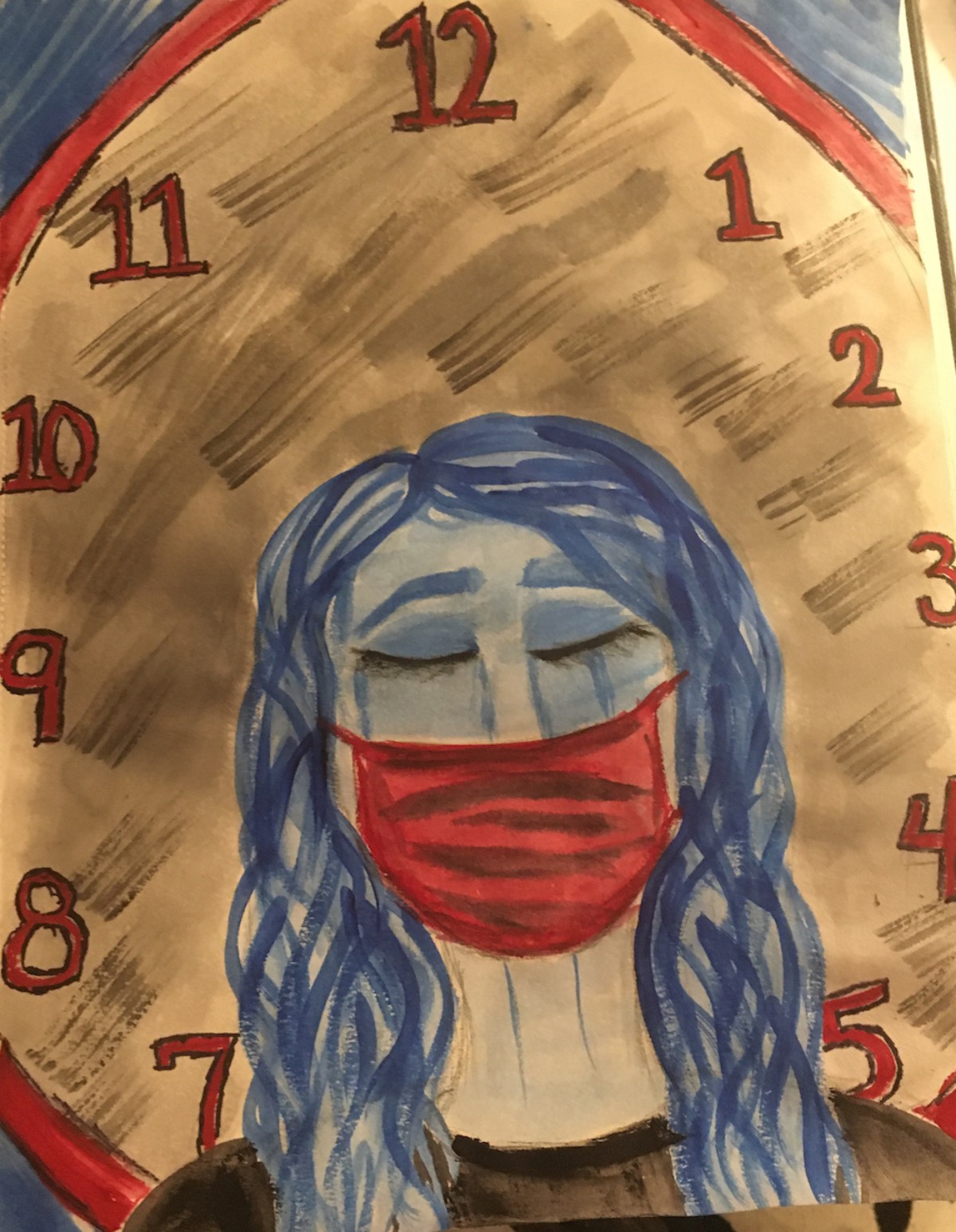COVID-19 turned Human Organism, Biology 106, into a current events class with art, music and poetry added to help students learn about and deal with the pandemic.
Dr. Mary Liz Jameson wanted her Wichita State University students to tell their COVID-19 story.
“Once class went online, she still had a good way of keeping in touch with us, seeing how we’re doing, how we’re coping and how it’s affecting our lives,” said junior Brooke Smith, a psychology major. “She was open to questions about it, open to class discussions about COVID.”
The class started talking about COVID-19 in early February as the virus moved into the consciousness. Wichita State moved to remote learning on March 16, just as Biology 106 neared its chapter on the respiratory system.
Jameson, associate professor of biological sciences, adapted to remote learning by turning her students’ creativity loose. They designed face masks. They wrote stories and poetry, performed songs and painted. She helped them deal with bad information by directing them to websites such as https://disinformationindex.org and Snopes.com.
Jameson asked them to consider questions such as:
- How have you helped others during the COVID-19 pandemic?
- What are your fears?
- What is your day like during the pandemic?
- What inspiration have you found during this strange time?
“The class became more interactive,” said freshman Emily Arreola, a psychology major. “It was more comfortable talking to the teacher and getting to know everyone. It’s very helpful – some things that I believed were true, she told me they weren’t. She informed us.”
Jameson said her students range widely in age and situations. Some are traditional students, and others have families. For some, the pandemic added responsibilities such as home-schooling siblings.
“Creativity sometimes helps when you’re isolated,” Jameson said. “I love it when people use their creativity – blending art and science. Song. Poetry. I got it all.”
The students sent in selfies with their masks, designs that included Shockers fabric, a patriotic theme and a grinning skull. One student made masks for her co-workers at Chick-fil-A. A video by student Dallas Grimes featured pictures of hospital workers set to music. Luke Snyder sang a song that included the line “all you will remember is all of the sons and daughters’ tears.”
Arreola, who works in a nursing home in Wichita, drew a picture representing the feelings of health-care workers.
“This picture is about how I see health professionals handling the epidemic, the person on the edge represents health professionals, the chaotic background represents the media overhyping the disease, but it also represents how people are not taking it has serious as they should,” she wrote. “That is why the background clashes.”
Smith painted a picture detailing the frustration and confusion caused by the pandemic. The woman’s blue hair represents sadness and the red mask is anger toward the virus. The clock is painted without hands. She used acrylic paint and dipped the brush in water to blur lines and portray the uncertainty of the times.
“Time is moving too fast or too slow, like it’s nonexistent,” she said. “My friends have graduation, and that’s their dream, and they can’t walk across the stage. Or they get their first job, and now they’re facing unemployment. It made me realize, although we’re all struggling individually, we are all struggling at the same time.”


 Courtesy photo
Courtesy photo